Tag: poultry waste
Protection
April 7, 2022
Protection
On a daily basis, our two Riverkeepers monitor the health of the Neuse and Tar-Pamlico watersheds and ecosystems. We serve as investigators, advocates and educators who partner with conservationists and concerned citizens to be hands-on activists protecting the health and beauty of our natural resources.
One of North Carolina’s Original Conservation Groups
Our staff has decades of experience in advocacy roles for the Neuse and Tar-Pamlico Rivers. The organization was founded by concerned citizens like you who care about the health and beauty of our waterways. We’ve been protecting our cherished rivers since 1980.
Our Riverkeepers monitor the health of the rivers and ecosystems in our communities. We investigate polluters, advocate for enforcement of existing laws, and demonstrate conservation techniques that protect the health of our natural resources.
The Dangers of Polluters Run Amuck
Sound Rivers often has to use strategic action to stop pollution and promote policies that will protect infograph_defend_sound-rivers_022616the rivers and watersheds. Too often the local, state and federal government agencies charged with enforcing our environmental laws are unable or unwilling to take critical enforcement actions, often because of lack of adequate resources or the potential for political or legal backlash.
As much as possible, we prefer to resolve matters through negotiation and cooperation without resorting to litigation. Typically, we’re able to resolve problems through communication. Our establish working relationships with industry, government and civic groups enables Sound Rivers to serve as a resource for water quality and environmental issues. We’re not only the voice for our rivers, but an ally to protect and restore our waterways.
Contact Us
April 7, 2022
Contact Us
Get in touch with us
Locations
WASHINGTON (OFFICE)
108 Gladden St.
Washington, NC 27889
252.946.7211
WASHINGTON (MAILING)
PO Box 1854
Washington, NC 27889
NEW BERN
2207 Trent Road
New Bern, NC 28560
252.637.7972
RALEIGH
19 Hargett St.
Raleigh, NC 27601
919.856.1180
Recreation
April 7, 2022
Recreation
On The Water
Sound Rivers represents the interests of its thousands of members, as well as everyone who recognizes the waterways of eastern North Carolina as the amazing assets they are. We care about the future of our rivers, streams and waterways because they sustain us humans and the nature we so enjoy.
They also support plenty of opportunities for recreation. From the Piedmont to the Pamlico Sound, here are some of the ways you can enjoy your rivers.
Wildlife Resources Commission
Explore our state’s beautiful wildlife and map out the best boat ramp locations for your next trip. The Wildlife Resources Commission is a wonderful place to begin researching your next journey.
Mountain-to-Sea Trail Guide
Explore how the Mountain-to-Sea Trail intersects with the Neuse River. Use these links to plan your next hiking adventure along our favorite rivers. The Mountain-to-Sea Trial Guide is a great resource, or you can also enjoy our convenient paddle map of the Neuse.
Tar-Pamlico Water Trail
Learn all about the hiking, campsites, camping platforms and fun activities in North Carolina’s Tar-Pamlico basin. The Tar-Pamlico Water Trail website is wealth of information. Owned and operated by Sound Rivers, these camping platforms provide overnight facilities to recreational users on the river (cost is $20 per night).
The goal is to build a continuous system of platforms approximately 8 to 15 miles apart, spanning from the headwaters of the Tar River in Granville County to the wide-open, estuarine waters of the Pamlico River in Beaufort, Hyde and Pamlico counties.
The platforms are open to the public. You can choose to sleep under the stars or in a screened-in enclosure along the scenic Tar River in the central and eastern part of the state. Enjoy white-water paddling in the headwaters and sea kayaking along the Inner Banks.
Recreational paddlers, boaters and fishermen are welcome to use the facilities year-round, though use is by permit only. All you need to do is reserve your spot.
Just want to take a walk along on the water? Sit a spell and watch the wildlife? Here’s a few places you can enjoy your waterways from land:
In the Tar-Pamlico watershed: Joyner Park, Louisburg; River Bend Park, Louisburg; Battle Park, Rocky Mount; Bridge Tar River Trail, Rocky Mount; Riverfront Park, Tarboro; Town Common/Tar River Greenway, Greenville; Wildwood Park, Greenville; Festival Park/boardwalk, Washington; Havens Gardens Park, Washington; Goose Creek State Park, Washington; Belhaven Beach, Belhaven; Mattamuskeet National Wildlife Refuge, Hyde County.
In the Neuse watershed: Little River Park, Zebulon; Wake County — Rolling View State Recreation Area, Falls Lake State Recreation Area, Beaverdam Lake State Recreation Area, Holly Point Campground State Recreation Area, Shinleaf Campground State Recreation Area, Blue Jay Point County Park, Forest Ridge Park, Falls Lake Dam Recreation Area; Neuse River Greenway; River Bend Park, Horseshoe Farm Nature Preserve; Milburnie Park; Anderson Point Park; Capital Area Greenway, Robertson Mill Pond Preserve and Mitchell Mill State Natural Area, Little River Park; Clayton Riverwalk on the Neuse Greenway, Clayton; Smithfield Town Commons;
Old Waynesboro Park, Goldsboro; Cliffs of the Neuse State Park, Seven Springs; Neuseway Nature Park, Kinston; Glenburnie Park, New Bern; Town of Bridgeton Park, Bridgeton; Union Point Park, New Bern; Lawson Creek Park, New Bern; John Bond Town Beach, Oriental; Lou Mac Park, Oriental.
Restoration
April 7, 2022
Restoration
Landscaping for Water Quality

When rain falls in a natural setting, it’s naturally filtered — through soils and groundwater or soaked up by vegetation. When land is developed, however, impervious surfaces (roads, rooftops, driveways, parking lots) prevent that filtering, which can lead to erosion in some places, flooding in others, and does lead to rainwater full of pollutants — suspended solids, nutrients (nitrogen and phosphorus), heavy metals, toxic organic pollutants and petroleum compounds — running directly into your waterways.
To deal with the increased problems from polluted stormwater runoff, Sound Rivers began a restoration program of on-the-ground projects to restore water quality in 2010. Since — courtesy of the state Environmental Enhancement Grant Program — we’ve partnered with many grade schools and community colleges across the Neuse and Tar-Pamlico watersheds to resolve their stormwater runoff issues in a variety of ways.
Rain Gardens
Rain gardens are landscaped depressions that collect stormwater runoff, then allow the runoff to slowly infiltrate to the ground-water table. A rain garden cuts down on localized flooding and allows nature to remove some of the pollutants otherwise affecting downstream water quality. During infiltration, plants use excess nutrients for growth, sediment is trapped in the garden and biological and physical processes remove pollution. Rain gardens also create important habitat for bees, butterflies, birds and other wildlife.

Constructed Wetlands
A constructed wetland is exactly what it sounds like: a manmade wetland that mimics the processes of the natural kind. Constructed wetlands collect and temporarily store stormwater runoff, reducing and stabilizing flow to adjacent natural wetlands and streams.
The bonus is — just like with natural wetlands — sediment settles and multiple pollutants are taken up and transformed by wetland plants and microbes, which reduces the number of pollutants entering your groundwater and waterways.

Rainwater Harvesters
A rainwater harvester is a fancy name for “a tank collecting rain from a rooftop.” One of the impervious surfaces we don’t often think of is, quite literally, above our heads. During a hard rain, rooftops can sluice off tens of thousands of gallons of water, but a rainwater harvester collects that runoff which then becomes a non-potable water source to be used for a variety of purposes, including irrigation of vegetables in raised beds (West Craven High School) and watering a football field (Epiphany School).
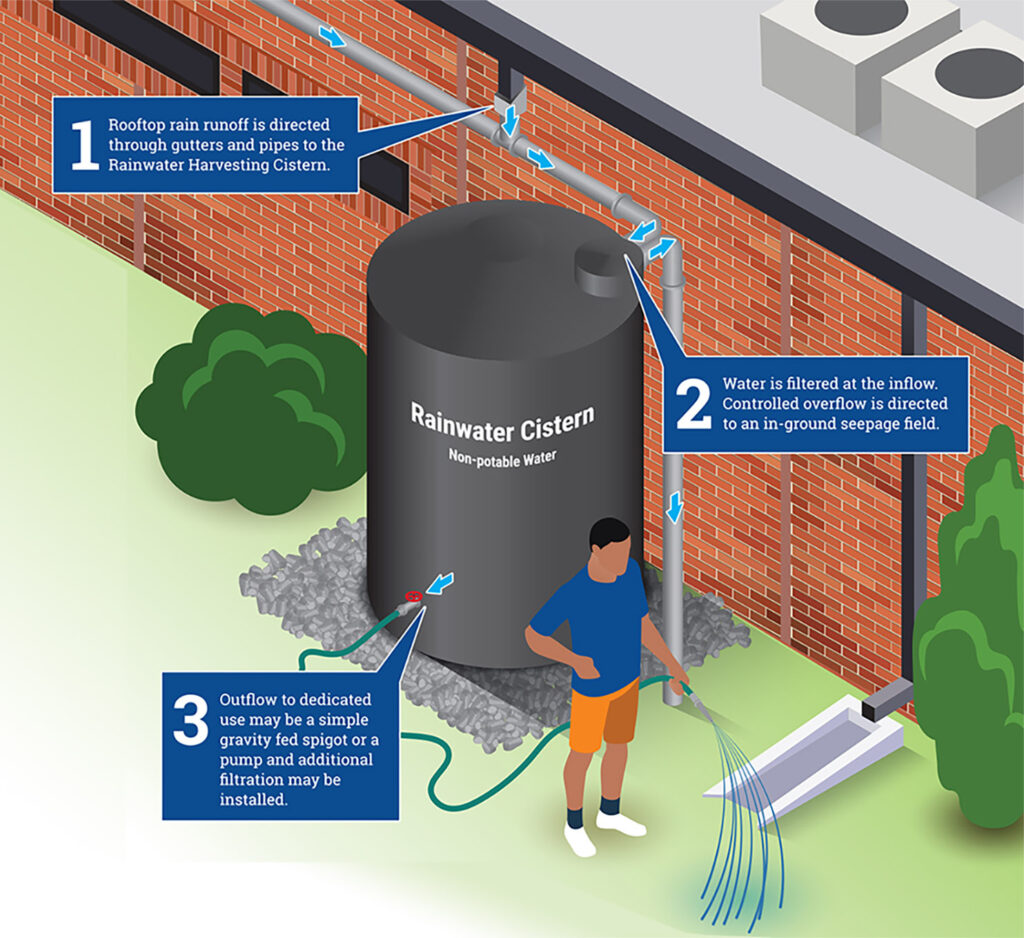
Latest News
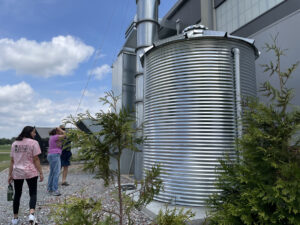
Sound Rivers staff meets up for campus stormwater tour
May 9th 2024
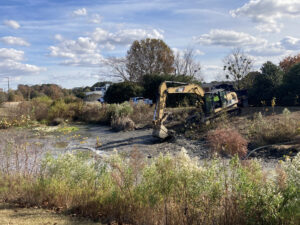
Position available: Stormwater Education Coordinator
April 18th 2024
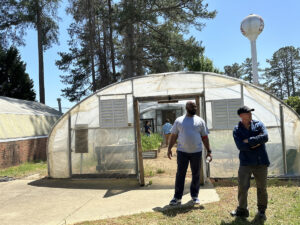
Southern Nash next in line for stormwater projects
April 18th 2024
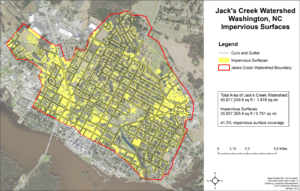
Feedback needed for Jack’s Creek plans, projects
April 11th 2024
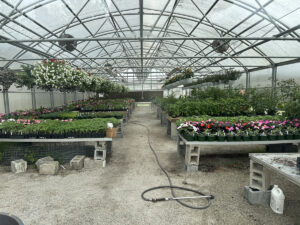
New cistern project on go
April 11th 2024
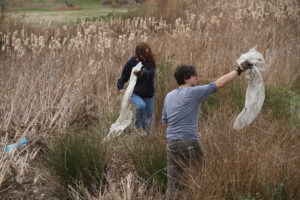
Sound Rivers, Environmental Alliance club team up for a wetland cleanup
February 29th 2024
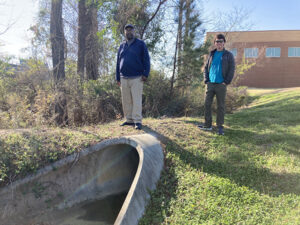
Sound Rivers seeking qualified engineering firms for project
January 26th 2024
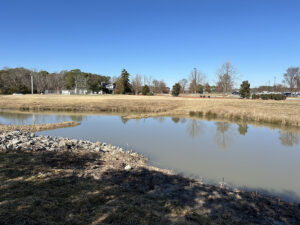
Wayne Community College wetland passes first test(s)
January 11th 2024
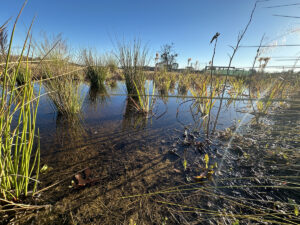
Rain Garden: before and after
December 21st 2023
Education
April 7, 2022
Education
One of the ways Sound Rivers serves our communities and the public is as experts on the ecosystems of the Neuse and Tar-Pamlico watersheds. We pride ourselves on working with statewide media, government officials, teachers, civic organizations and other nonprofit organizations to help educate about the issues facing our waterways.
MEET YOUR RIVERKEEPER
Nature is our classroom and our teachings combine real-world scenarios and hands-on activism within the local environment. Topics our Riverkeepers often cover during presentations include:
We’re always happy to be a resource for teachers and provide programs tailored to lesson plans. We’ve worked within schools throughout the basin, supporting science and math curricula and inspiring young minds to connect concept to reality through water science.
There’s nothing like experiencing nature to help kids get the basics of water ecosystems and issues. We work closely with teachers to lead curriculum-based programs, events and presentations that build students’ knowledge and understanding. Get in touch today to discuss classroom opportunities!
Almost all educational programs and visits by one of our two Riverkeepers and our stormwater program director are free, but donations are always welcome. As a nonprofit conservation organization, Sound Rivers exists thanks to support from area residents.

Latest News
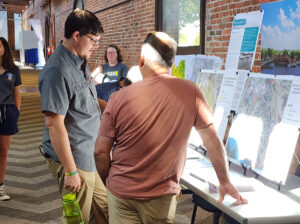
Open house a forum for Jack’s Creek concerns
May 9th 2024
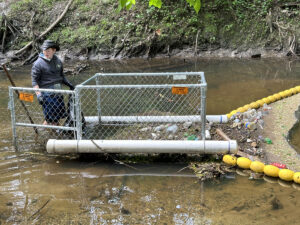
Scout earns volunteer hours with trash trap cleanout
April 25th 2024
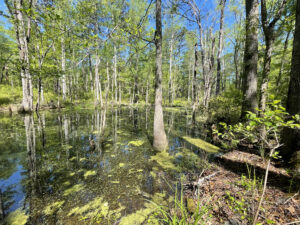
Tell NC to restore wetlands protections!
April 19th 2024

Position available: Stormwater Education Coordinator
April 18th 2024
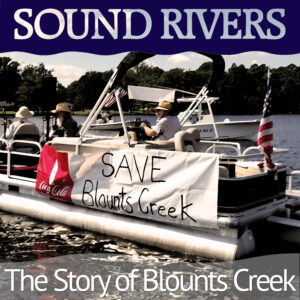
Sound Rivers launches new podcast
April 18th 2024

New cistern project on go
April 11th 2024

Riverkeeper panelist at water summit
April 4th 2024
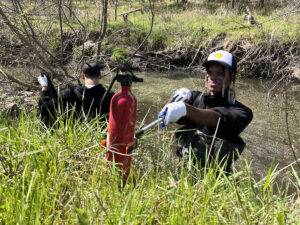
Biology class volunteers for Kinston trash trap cleanout
March 28th 2024
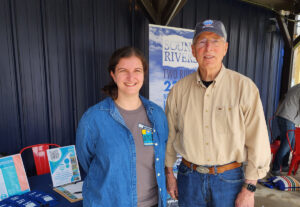
Sound Rivers helps Hillsborough celebrate Creek Week
March 28th 2024
Sign up for eNews!
Please enter your email address to receive our event reminders and eNews.
Natural Setting
April 7, 2022
Tag: poultry waste
The Neuse and Tar-Pamlico watersheds comprise 12,000 square miles and cover nearly one-fourth of the land area in North Carolina. They are among the most heavily used water resources in the state.
Sound-Rivers-Neuse-Tar-Pamlico
Tar-Pamlico River
The Tar River begins as a freshwater stream in the Piedmont near Roxboro, rising east to meet the Pamlico River near Washington, N.C. to drain into the Pamlico Sound before meeting the Atlantic Ocean. Major tributaries in the upper basin include Swift, Fishing and Tranters creeks and Cokey Swamp, as well as Pungo River in the lower basin. It also includes Lake Mattamuskeet, at more than 18 miles long and 6 miles wide, it is the largest natural lake in the state and home to Mattamuskeet National Wildlife Refuge.
Neuse River
The longest river in North Carolina, the Neuse River Basin stretches 248 miles from the Falls Lake Reservoir Dam in the Piedmont to its mouth at the Pamlico Sound and the state’s original capital at New Bern. At its mouth, six miles across, it’s the widest river in America and our nation’s second largest estuary. Major tributaries include Crabtree, Swift and Contentnea creeks and the Eno, Little and Trent rivers. The Neuse River Basin is a critically important body of water for nearly one-sixth of the state’s population.
About Sound Rivers
April 7, 2022
About Sound Rivers
Sound Rivers is a nonprofit organization that guards the health of the Neuse and Tar-Pamlico River Basins.
We unite with concerned citizens to monitor, protect and preserve the watersheds covering nearly one-quarter of North Carolina.
Founded in 2015 with the merger of two of the state’s oldest grassroots conservation organizations, Sound Rivers combines the deep history of advocacy of the Neuse River Foundation, established in 1980, and the Pamlico-Tar River Foundation, established in 1981. This union to become Sound Rivers creates a powerful advocate protecting our most cherished waterways and bolsters our impact within the State of North Carolina.

Our Mission
To monitor and protect the Neuse and Tar-Pamlico River watersheds covering nearly one quarter of North Carolina, and to preserve the health and beauty of the river basin through environmental justice.
Sound Rivers is committed to the goal of environmental justice and equity for all people in our watershed. We are a stronger organization and our work to protect our waters is more successful when our organization represents the full diversity of people living within our watersheds. We recognize the benefits and impact of diverse leadership, building of trust in impacted communities, and programs that are inclusive to ensure we serve the needs of all those communities within the Neuse and Tar-Pamlico River basins.
We believe all people should have access to enjoyment of the natural world and a powerful voice in decisions that may affect their environment and health. No group of people should bear a disproportionate share of negative environmental consequences, nor should they have less access to beneficial environmental goods.
We acknowledge that historically Sound Rivers has been a predominantly white organization. While we are working to change that, we are committed to ongoing activities focused on learning, reflection, adaptation and intentional and focused outreach to diverse communities to ensure our work reflects, respects, engages, and includes communities of color.
Pamlico-Tar River Basin
The Tar River begins as a freshwater stream in the Piedmont near Roxboro, and widens as it runs east to meet the Pamlico River near Washington before draining into the Pamlico Sound.
Neuse River Basin
The Neuse River stretches 248 miles from Falls Lake in the Piedmont to its mouth at the Pamlico Sound and the state’s original capital of New Bern. It serves nearly one-sixth of the state’s population.
Our RIVERKEEPERS®
Our three full-time RIVERKEEPERS® monitor our region’s waterways, serving as scientific experts and educational resources to schools and communities living in the watershed.
